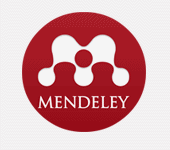Implementasi Kebijakan Pencegahan Pencemaran Air Permukaan oleh Air Limbah Industri di Daerah Aliran Sungai Brantas Kediri
Abstract
The City Government of Kediri in an effort to preserve the environment forms a legal basis namely the City Regulation of Kediri Number 3 of 2009 cocerning Environmental Management. One of the targets in the regional regulation is to preserve the watershed and water sources. In accordance with the 2015-2019 Medium Term Development Plant , there are 15 watersheds that are prioritized to be restored first and one of them is the Brantas watersheds. This study aims to identify the implementation of the Kediri City Government policy in preventing surface water pollution by industrial wastewater in the Brantas River Basin, Kediri District. The method used in this research is descriptive. Collecting data by conducting in-depth interviews with industrial waste water treatment officers and officers in the field of environmental damage pollution in the Departement of Environment, Hygiene and Gardening of Kediri City. Based on the research results, it is known that most of the industries have carried out wastewater treatment and not ith a dilution process and most of the industries have IPLC. Based on the wuality standards, it is known that the quality standards of industrial waste are in accordance with the standards set by the government and the industry routinely conducts wastewater quality tests, but the industry is still lacking in reporting the results of wastewater quality tests. In wastewater treatment facilities and infrastructure, the government has provided rubbish place for industrial estates and most industries have their own rubbish place.
Full Text:
PDFReferences
Arisandi, Prigi. 2009. Menyelamatkan Kali Brantas. http://nasional.kompas.com/read/2009/11/05/17341653/menyelamatkan.kali.brantas.
Angela, Muller, Claudia. 2017. Pengolahan Limbah Cair dan Padat di PT Maya Food Industries. Semarang: Universitas Katolik Soegijapranata.
Badan Pusat Statistik Kota Kediri. 2018. Kota Kediri dalam Angka 2018. Kota Kediri: BPS Kota Kediri/BPS-Statistics of Kediri Municipality
Lutfiansyah, Husni Arief. 2012. Evaluasi Implementasi Program IPAL (Instalasi Pengolahan Air Limbah) di Kawasan Inudstri Kampung Batik Laweyan Surakarta. Fakultas Ilmu Sosial dan Politik Universitas Sebelas Maret: Surakarta.
Manggara, Algafari Bakti & Erfan Tri Prasongko. 2015. Analisis Timbal (Pb) pada Ikan Nila Merah (Oreochromis sp) di Keramba Apung Sungai Brantas Semampir Kediri. Kediri:Jurnal Wiyata.
Menteri Negara Lingkungan Hidup. 2007. Peraturan Menteri Negara Lingkungan Hidup Nomor 01 Tahun 2007 Tentang Pedoman Pengkajian Teknis Untuk Menetapkan Kelas Air. Jakarta:Menteri Negara Lingkungan Hidup.
Pemerintah Kota Kediri. 2009. Salinan Peraturan Daerah Kota Kediri Nomor 3 Tahun 2009 Tentang Pengelolaan Lingkungan Hidup. Kota Kediri:Pemerintah Kota Kediri.
Prakoswa, Raditya Hanung. 2018. 15 Daerah Aliran Sungai Prioritas untuk dipulihkan. CNBC Indonesia. https://www.cnbcindonesia.com/news/20180325170944-16-8484/15-daerah-aliran-sungai-prioritas-untuk-dipulihkan [Diakses pada 16 Februari 2019. Pukul 10.22]
Putra, M.A.R. 2013. Pelaksanaan Pengendalian Pencemaran Lingkungan Hidup oleh Kantor Lingkungan Hidup Kota Kediri Terkait Kasus Limbah Industri Pembuatan Tahu POO. Malang: Universitas Brawijaya.
Yuda, Oki Oktami & Eko Priyo Purnomo. 2018. Implementasi Kebijakan Pengendalian Pencemaran Limbah Cair Hotel di Kota Yogyakarta Tahun 2017. Universitas Muhmadiyah Yogyakarta: Jurnal Administrasi Publik.
Zulkifli. 2017. Pengolahan Air Limbah Industri. Makassar: Fakultas Teknologi Industri Universitas Muslim Indonesia
DOI: http://dx.doi.org/10.30829/jumantik.v6i1.7227
Refbacks
- There are currently no refbacks.
Copyright (c) 2021 Ekawati Wasis Wijayati

This work is licensed under a Creative Commons Attribution-ShareAlike 4.0 International License.





